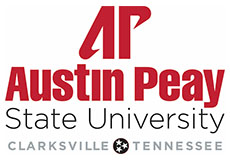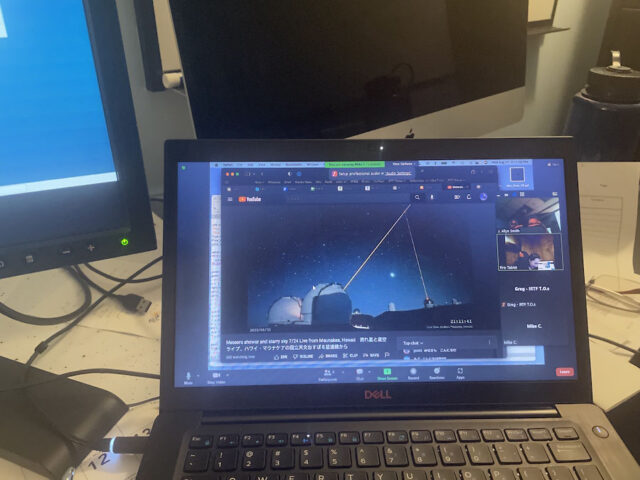 Clarksville, TN – Several students in the Department of Physics, Engineering and Astronomy at Austin Peay State University (APSU) experienced a stellar treat last month when they got the opportunity to use the world-renowned Mauna Kea Observatories in Hawaii to observe some massive stars.
Clarksville, TN – Several students in the Department of Physics, Engineering and Astronomy at Austin Peay State University (APSU) experienced a stellar treat last month when they got the opportunity to use the world-renowned Mauna Kea Observatories in Hawaii to observe some massive stars.
The students joined Dr. J. Allyn Smith, professor of astronomy, and a team of astrophysicists from Canada and the United States over five nights to use the NASA Infrared telescope remotely. Smith’s students, for example, made their observations from a room on the third floor of the Sundquist Science Complex at APSU’s campus.
“We haven’t done anything except out at the farm (on the university’s 20-inch Ritchey-Chretien telescope),” said Li Loy, a junior majoring in physics with a concentration in astrophysics. “This is an official observation – our first time taking part in actual observation.”
The team studied the stellar wind profiles of two massive stars by using a telescope that works in the infrared part of the spectrum, Smith said.
“This is actual science where we’re taking pictures and collecting data from the spectrograph,” Loy added. “From that, we can see the chemical composition of what we’re looking at. You can see through the dust and deeper into planetary nebula or see stars that are usually hidden.”

On the first night of observation, Eden Kope, a sophomore with a concentration in astrophysics, said the team spent a lot of time observing two stars. His biggest takeaway was the time needed to do observational research.
“You’re like, ‘OK, I see what we’re doing, and, man, it’s taking forever,’” he said. “It’s different than having the data handed to you – actually being there and getting the data and being like, ‘This took six hours.’”
Loy missed the first night but came on later nights.
“I was so upset that I couldn’t come the first night after I heard about what they were observing,” they said. “This is actual science. This is the hands-on stuff that I wanted to get involved in. I mean, we’ve all done research before, but it’s only papers and posters and stuff that we’ve made, like pictures taken by somebody else. This is us doing actual new research.”
The experience was eye-opening.
“It shows how much cooperation needs to be done with remote observing like this,” Loy said. “We’re helping out here. They’re doing stuff there. And we’re all talking at the same time. It’s a team-focused effort.”
Meagan Porter, a sophomore with a concentration in astrophysics, agreed.
“At first glance, it was all very overwhelming, because when you first turned it on, there were four screens filled with 50 different tabs, and we’re just sitting there wondering, ‘What is that? There are a lot of numbers in there,’” she said. “But now I’m able to understand those kinds of complicated things. Looking at those screens now makes me very happy because I can think, ‘Oh, I know what this is now, and this is going to be my future.’”
The students also experienced working with an Austin Peay State University alum – and principal investigator for the team – Melissa Butner, who graduated in 2012 with a Bachelor of Science in Physics. Butner is the laboratory coordinator for physics and astronomy at East Tennessee State University.
“She started exactly this way, sitting in on an observing session with me … on this telescope,” Smith said.
The Mauna Kea Observatories is a group of astronomical research facilities and telescopes at the summit of Mauna Kea on the Big Island of Hawaii.



